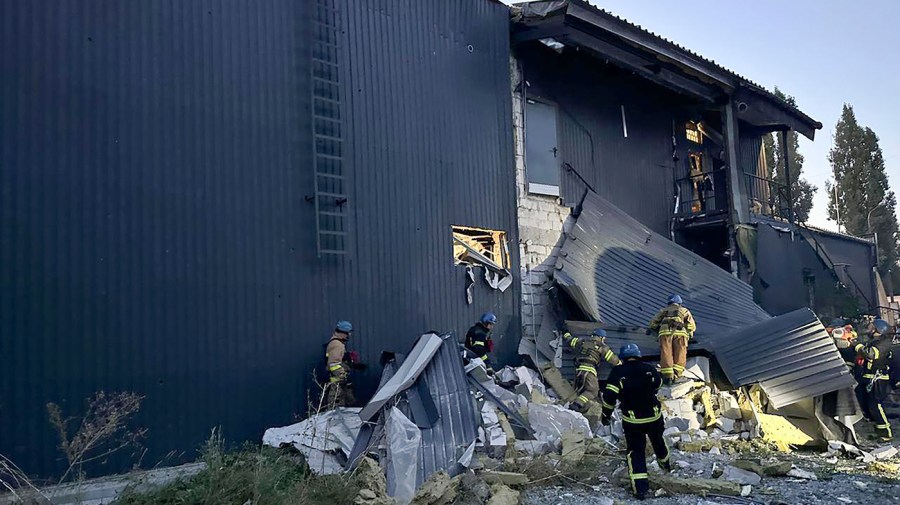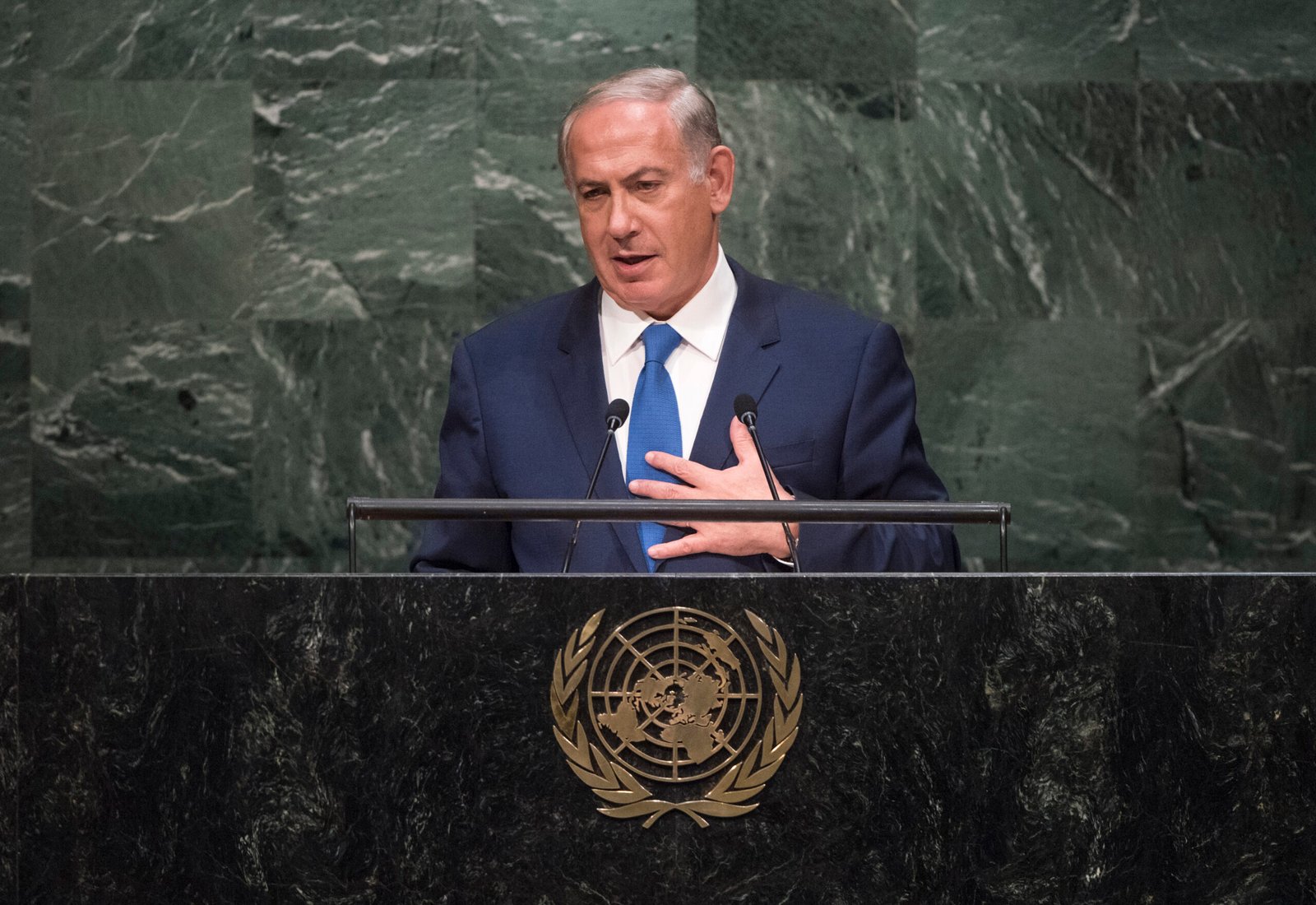World News
Alarm grows as Ukraine’s counteroffensive falters on August 10, 2023 at 9:55 pm

There is growing alarm about the pace and prospects of Ukraine’s counteroffensive, with few signs of progress in recent weeks and Russian lines holding strong.
Those concerns picked up steam in the past week after Ukraine launched a second push in the southern Zaporizhzhia region and has still come up mostly empty in the eyes of Western allies.
U.S. officials told CNN on Tuesday that significant progress was “highly unlikely,” especially with fall and winter fast approaching. And another U.S. official told NBC News, “There is a frustration that they have not used more of the combat power that they have.”
The Quincy Institute for Responsible Statecraft said in a “Time” magazine piece that Ukrainian forces are outmanned and outgunned and need a “Plan B,” which would include scaling back to focus on defense.
Sen. Tommy Tuberville (R-Ala.), a former football coach, gave voice to the growing skepticism, comparing Ukraine to “a junior high team playing a college team” in an interview with Fox News this week, adding: “They can’t win.”
Despite the sobering assessments U.S. officials are making anonymously in the media, the Biden administration maintains that Ukraine will recapture Russian-occupied territory and ultimately triumph.
The narrative has frustrated Ukraine, which continues to urge patience as it chips away at Russian fortifications — including thousands of landmines — and searches for weak spots along the frontlines.
Maksym Skrypchenko, the president of the Kyiv-based Transatlantic Dialogue Center, a nonprofit think tank that advises Ukraine’s government, said the current Western support is “enough to survive” but “not enough to effectively counterattack.”
“Without [the weapons] I think that nobody should expect some miracle like it was a year ago, because Russia is more prepared right now and already knows what to expect from the Ukrainian side,” he said.
Ahead of the offensive, which launched in early June, NATO members gave Ukraine hundreds of modern tanks, armored carriers and infantry fighting vehicles. The U.S. said Kyiv had everything it needed for the offensive. Some allies have also delivered Soviet-era jets and long-range missiles to supplement Ukraine’s needs.
But Skrypchenko noted the U.S. has held back on key weapon systems such as Army Tactical Missile System (ATACMS), which fires long-range missiles, and F-16 fighter jets. He also said Ukraine does not have nearly enough artillery shells because defense production in Western nations has been unable to keep pace with the war.
Skyrpchenko said Soviet-era jets are unable to cross into the front lines to execute certain maneuvers because they will be “shut down,” and the highly valued ATACMS would significantly boost the military’s ability to destroy key Russian-held bridges.
“Of course it’s not a silver bullet, but it would be dramatically easier for Ukraine to advance using better and more advanced weapons,” he argued.
The counteroffensive in Zaporizhzhia has big ambitions: Ukrainian forces need to break through miles of territory to the Sea of Azov and sever a land bridge from mainland Russia to the Crimean Peninsula.
Further north in eastern Ukraine, troops are trying to retake territory around the city of Bakhmut in a push to liberate the Donetsk region.
Both offensives face major obstacles of dug-in trenches, minefields, Russian air superiority and intense artillery defenses. And Russian troops are resisting Ukraine with its advances, with territory constantly being traded back and forth.
Branislav Slantchev, a professor of political science at the University of California, San Diego, who studies the conduct of war, said Ukraine was moving slower than some supporters would expect because Kyiv wants to minimize casualties.
Slantchev predicted Ukraine is “very close to a breakthrough in Zaporizhzhia,” pointing out it took Ukraine months of work before big results were achieved in a successful offensive to retake Kherson last year.
“Nothing happens for several months and then suddenly the results come in. Because once they’ve degraded some sectors sufficiently to attempt a breakthrough, if the breakthrough works, you will see it very quickly afterwards,” he added.
Slantchev, however, said the delay behind key weapons and armor shipments has been an issue for Ukraine. He argued F-16s and ATACMS are not “wonder weapons” but more advanced weapons can be considered “game changers.” He also said Kyiv has only received some of the equipment promised earlier this year.
“A lot of the promises that we’ve made are longer term, that will take months,” he said. “It’s not that they’re lying. It’s just that the people who say we’ve given a lot make it sound like everything that’s been promised is actually delivered, or will be delivered shortly, which is just not true.”
Pentagon spokesperson Brig. Gen. Pat Ryder on Thursday characterized the current phase of the war as a “tough fight” but praised the Ukrainian army for its past victories and ability to overcome great odds.
“We’ve known from the beginning that regardless of when any counteroffensive started, it was going to be a tough fight,” Ryder told reporters. “Going forward, we’re going to continue to consult with them, we’re going to continue to provide them training so that they can take back sovereign territory.”
The White House doubled down on that commitment on Thursday, requesting another $13 billion in security aid for Ukraine from Congress. The Biden administration has also played down a CNN poll last week that found most Americans don’t want Congress to authorize additional aid to Ukraine.
The counteroffensive so far has achieved the liberation of around 100 square miles of territory within two months, compared to the thousands of square miles retaken in the Kherson and Kharkiv offenses last year.
Part of the problem for Ukraine is the extensive network of defenses Russia had months to construct and continues to fortify.
Ukrainian Deputy Defense Minister Hanna Maliar this week admitted Russia was “seriously strengthening its defensive lines.”
“And our troops are now faced not only with mining, but also with concrete engineering fortification of key commanding heights,” she said in a Telegram post.
But Ukraine is adjusting its tactics and still maintains the initiative, said Mick Ryan, a retired major general from the Australian Army and a military analyst. Ukrainian forces are now seizing small bits of territory, holding the land and moving forward under the cover of artillery.
“Ukraine is making some progress. Because none of us, except the Ukrainian military high command and government members, know the actual Ukrainian objectives for each phase of the war, we cannot say with any certainty whether this is behind or on schedule,” he wrote in a recent analysis. “However, Ukraine is recovering its territory.”
One of the most difficult challenges for Ukraine outside of the battlefield is countering expectations in the West for immediate results.
In recent speeches, Ukrainian President Volodymyr Zelensky has repeatedly called for “maximum focus” and unity behind Ukraine and its allies during the offensive.
Mykhailo Podolyak, adviser to the office of Zelensky, said Ukraine has already demonstrated that it can take on Russia and supporters should not get carried away by relentlessly commenting on the speed of the operation.
“Everyone needs to be patient and closely monitor the high-quality work of the Armed Forces of Ukraine,” he said.
There is growing alarm about the pace and prospects of Ukraine’s counteroffensive, with few signs of progress in recent weeks and Russian lines holding strong. Those concerns picked up steam in the past week after Ukraine launched a second push in the southern Zaporizhzhia region and has still come up mostly empty in the eyes…
Politics
Netanyahu’s UN Speech Triggers Diplomatic Walkouts and Mass Protests

What Happened at the United Nations
On Friday, Israeli Prime Minister Benjamin Netanyahu addressed the United Nations General Assembly in New York City, defending Israel’s ongoing military operations in Gaza. As he spoke, more than 100 delegates from over 50 countries stood up and left the chamber—a rare and significant diplomatic walkout. Outside the UN, thousands of protesters gathered to voice opposition to Netanyahu’s policies and call for accountability, including some who labeled him a war criminal. The protest included activists from Palestinian and Jewish groups, along with international allies.

Why Did Delegates and Protesters Walk Out?
The walkouts and protests were a response to Israel’s continued offensive in Gaza, which has resulted in widespread destruction and a significant humanitarian crisis. Many countries and individuals have accused Israel of excessive use of force, and some international prosecutors have suggested Netanyahu should face investigation by the International Criminal Court for war crimes, including claims that starvation was used as a weapon against civilians. At the same time, a record number of nations—over 150—recently recognized the State of Palestine, leaving the United States as the only permanent UN Security Council member not to join them.
International Reaction and Significance
The diplomatic walkouts and street protests demonstrate increasing global concern over the situation in Gaza and growing support for Palestinian statehood. Several world leaders, including Colombia’s President Gustavo Petro, showed visible solidarity with protesters. Petro called for international intervention and, controversially, for US troops not to follow orders he viewed as supporting ongoing conflict. The US later revoked Petro’s visa over his role in the protests, which he argued was evidence of a declining respect for international law.

Why Is This News Important?
The Gaza conflict is one of the world’s most contentious and closely-watched issues. It has drawn strong feelings and differing opinions from governments, activists, and ordinary people worldwide. The United Nations, as an international organization focused on peace and human rights, is a key arena for these debates. The events surrounding Netanyahu’s speech show that many nations and voices are urging new action—from recognition of Palestinian rights to calls for sanctions against Israel—while discussion and disagreement over the best path forward continue.
This episode at the UN highlights how international diplomacy, public protests, and official policy are all intersecting in real time as the search for solutions to the Israeli-Palestinian conflict remains urgent and unresolved.
News
Is a Nuclear-Powered Alien Spacecraft Flying Toward Earth?

A mysterious interstellar object speeding through our solar system has reignited debates about extraterrestrial technology — and whether Earth might currently be under quiet observation.
The object, known as 3I/ATLAS, is only the third confirmed interstellar visitor ever detected. Unlike ordinary comets, however, this cosmic traveler has baffled astronomers with its unusual brightness, strange trajectory, and lack of a visible cometary tail. While most scientists cautiously describe it as a natural body, one leading astrophysicist believes something much stranger is at play.

Harvard Scientist’s Bold Claim
Professor Avi Loeb of Harvard University, head of the Galileo Project, has suggested that 3I/ATLAS may in fact be a nuclear-powered alien spacecraft designed to test how humanity would respond to an interstellar visitor. He argues that its flight path is improbably precise, bringing it close to Mars, Venus, and Earth — a pattern highly unlikely to occur by chance.
Loeb also points out that telescope images show a glow inconsistent with ordinary dust behavior. Instead of trailing behind like a comet, the halo-like light appears to extend in unusual ways, sparking debate about whether the object could be emitting energy of its own.
Headed Toward Earth’s Neighborhood
3I/ATLAS is expected to make its closest approach in late 2025, passing near Mars before swinging by the inner solar system. Although Earth itself will be on the opposite side of the Sun when it comes closest, the alignment will still enable space-based observatories to capture sharper data.

Loeb has called on NASA and other agencies to use spacecraft already stationed near Mars or Jupiter — including the Juno mission — to take high-resolution photographs. He believes such efforts could reveal whether the interstellar object is truly natural, or the first technological probe humanity has ever encountered.
Should We Be Worried?
While most astronomers argue caution before jumping to alien conclusions, Loeb insists that scientific openness is key. “If it’s just a comet, we learn something new,” he said. “But if it’s a spacecraft, it would be the most important discovery in human history.”
For now, 3I/ATLAS remains a mysterious speck on astronomers’ charts, drifting closer with each passing day. Whether it proves to be a frozen remnant of another star system or something far more advanced, the interstellar visitor has already succeeded in one mission: reminding us how vast and unpredictable the universe really is.
News
AI Automation Could Cause Up to 20% Unemployment—A Workforce on the Brink

Stark Warning from Anthropic CEO Highlights Rapid Job Displacement Risk
The looming threat of widespread unemployment due to AI automation has sparked intense debate among experts, business leaders, and policymakers. Dario Amodei, CEO of Anthropic—the company behind the influential AI language model Claude—issued a stark warning that has sent shockwaves through corporate America:

“Up to half of all entry-level white collar jobs could disappear within the next one to five years, potentially pushing unemployment rates as high as 20% during this period.”
This dramatic forecast paints a picture of a rapid and unsettling transformation in the workforce, driven by AI technologies that can perform complex cognitive tasks.
Balancing Predictions: Worst-Case Scenarios vs. Moderate Impact
However, this forecast represents one end of a spectrum of expert predictions. While Amodei’s warning highlights the worst-case scenario driven by the swift adoption of AI agents capable of coding, analyzing data, drafting legal documents, and managing workflows around the clock, other analyses suggest a more moderate impact. For example, Goldman Sachs estimates that AI could temporarily displace about 6-7% of U.S. jobs, with unemployment rising by approximately half a percentage point during the adjustment period. Their research anticipates a more gradual transition with a mixture of job disruption and creation.

The Unprecedented Speed and Scope of AI-Driven Job Disruption
The truth likely lies somewhere in between. AI is advancing at unprecedented speed, and the scope of jobs affected spans far beyond blue-collar roles to white-collar positions that required college degrees and years of training. Entry-level roles such as customer service representatives, data entry clerks, junior analysts, and administrative assistants face the greatest near-term risk. Mid-level roles in accounting, marketing, law, and engineering could soon follow, with companies already laying off workers citing AI-driven efficiencies.
Preparing for an AI-Transformed Workforce: Adaptation Is Essential
Ultimately, the AI-driven job transformation is no longer a distant prospect but unfolding now. Whether unemployment spikes to 20% or stabilizes at lower levels depends on many factors, including business adoption rates, government policies, and the ability of workers to reskill. What is certain is that the workforce of tomorrow will look very different from today—and the time to prepare is right now.

 Business4 weeks ago
Business4 weeks agoDisney Loses $3.87 Billion as Subscription Cancellations Surge After Kimmel Suspension

 Entertainment4 weeks ago
Entertainment4 weeks agoWhat the Deletion Frenzy Reveals in the David and Celeste Tragedy

 Entertainment4 weeks ago
Entertainment4 weeks agoExecutive Producer Debut: How Celia Carver Created Festival Hit ‘Afterparty’

 Health4 weeks ago
Health4 weeks agoRussia Claims 100% Success With New mRNA Cancer Vaccine

 Business3 weeks ago
Business3 weeks agoWhy Are Influencers Getting $7K to Post About Israel?

 Health4 weeks ago
Health4 weeks agoWhy Did Gen Z QUIT Drinking Alcohol?

 Advice4 weeks ago
Advice4 weeks agoHow AI Is Forcing Everyone Into the Entrepreneur Game

 Entertainment3 weeks ago
Entertainment3 weeks agoKeith Urban and Nicole Kidman Split After 20 Years as Actress Files for Divorce






























